Last-Minute NYC Holiday Gift Guide 🎁
We’ve created a holiday gift guide with presents for the intrepid New Yorker that should arrive just in time—

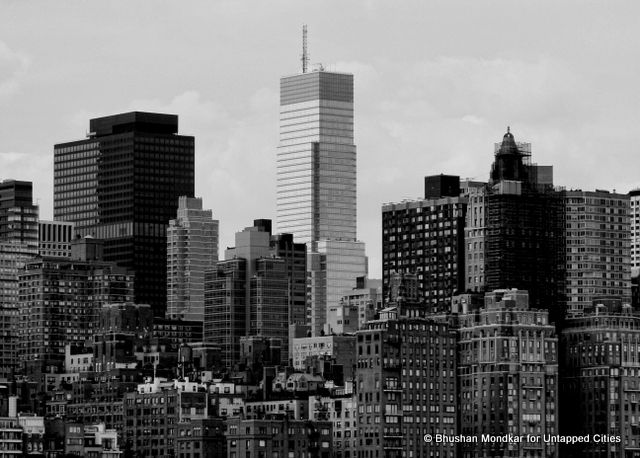
This is part of an ongoing series on ideas from Next New York, a project by the Forum for Urban Design. Previous articles include Planes, Trains and (fewer) Automobiles: Transportation Ideas and 40 Ideas That Could Transform New York.
In the last decade New Yorkers have witnessed the transformative power of Urban Design at a scale never seen before. Through an unprecedented emphasis on the creation of public spaces and development, Mayor Bloomberg engineered the physical, economic and cultural transformation of the city.
Together with the transportation commissioner Janette Sadik Khan, his war against the automobile carved out more than 400 miles of bike lanes, with initiatives to make the streets safer and more pedestrian friendly. More notably, he elevated the prominence of planning and zoning issues, revitalizing sites such as Atlantic Yards, Long Island City and more recently, the Hudson Yards Redevelopment Project. Under the Bloomberg administration, Planning Director Amanda Burden led an ambitious program that rezoned 40 percent of the city, adding 40,000 new buildings to skylines across all five boroughs, opening up the waterfront and developing land use patterns most suited for the future growth of the city. The appointment of Alex Washburn as Director of Urban Design within city planning solidified the administration’s commitment to design as a critical component of physical planning.
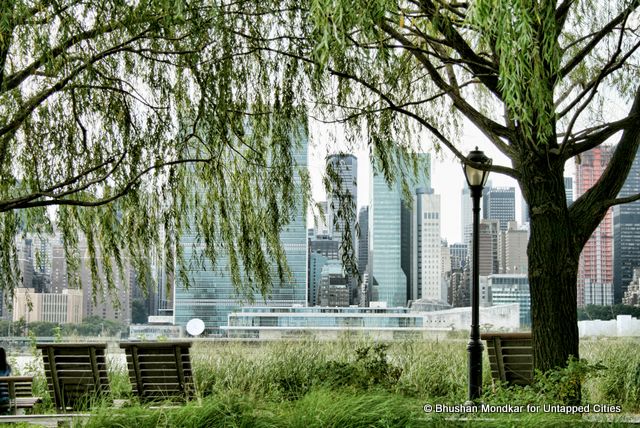
As New Yorkers prepare to bid farewell to Mayor Bloomberg, Forum For Urban Design invited a diverse group of real estate developers, Architects, Urban Designers and public officials to discuss bold proposals for our next mayor. Over a series of seven breakfast discussions, attended by Untapped Cities, The Forum gathered forty proposals that will be published in the book ‘Next New York‘.
While the first discussion focused on some highly imaginative Air and Rail proposals, the second one explored strategies to improve the livability of communities and accommodate the needs of an expanding population and the community as a whole. Here is a roundup of these intriguing proposals.
The aftermath of Hurricane Sandy saw a surge in proposals and debates about hard versus soft infrastructure to battle the next storm. Governor Cuomo also proposed to spend $400 million to buyout properties wrecked by the hurricane and permanently preserve the flood prone land as undeveloped coastline. However, there is no long term plan in place to fund the buyout. A proposal put forth by Susannah Drake, founding principal of dlandstudio is meant to materialize this plan.
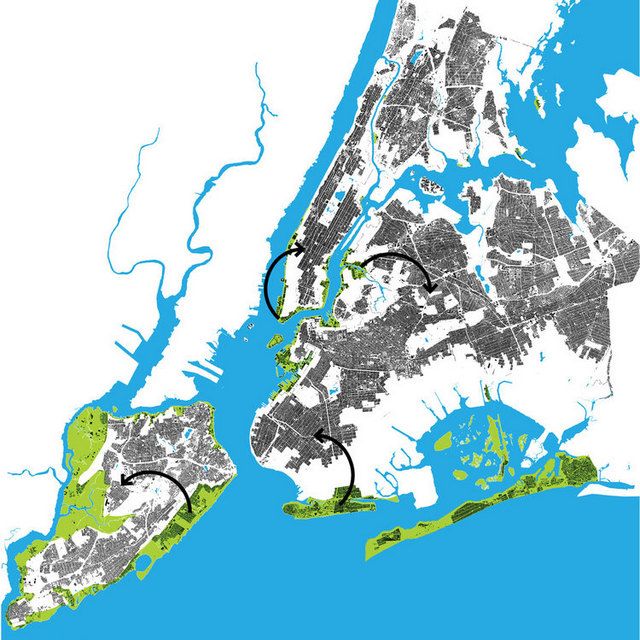
Courtesy dlandstudio
She suggests that the development rights from the flood zones be transferred to the upland area to facilitate the buyout of these vulnerable areas. In doing so, the coastal zone would inherit some funds for the construction and long-term maintenance of wetland buffers, creating a robust coastal landscape. Without sacrificing valuable real-estate, this strategy offers the city an opportunity to finance and strengthen a more resilient coastline.

Courtesy dlandstudio
Landmarked buildings undoubtedly make a tremendous contribution to the rich heritage of New York City. However the costs associated with maintaining these properties is often encumbered upon the owners. Vicki Been, Director of the Furman Center for Real Estate and Urban Policy rightly points out, “Everyone in the city benefits from the preservation of landmarks, but only the owner bears the cost of preserving them.” To mitigate the financial losses incurred by the property owners of the landmarked structures, New York City led the nation as the first city to implement a ‘Transfer of Development Rights’ (TDR) program in 1968. However, the lengthy and uncertain review process involved in the program has curtailed the rate of actual transfers. As many as 64 landmarks in Manhattan Community Districts 1-6 have unused rights that are ‘stranded’.
Ms. Been suggests that the city should have a more effective way to allow landmark owners to use the development rights to obtain the necessary funds. To simplify this process, she proposes that all non-profit landmarks be allowed to transfer their development rights anywhere within their community district, as long as they adhere to the existing building constraints. An additional fee charged on transfers can help to generate revenue to maintain local infrastructure and improve the streetscape.
The Landmarks law has definitely enhanced the city by preserving its most noteworthy buildings and neighborhoods, but Steven Spinola, President of the Real Estate Board of New York criticizes the lack of transparency and openness in the process. The Landmark Preservation Commission (LPC) is not required to justify its rationale while designating substantial portions of the city as historic districts. More importantly the Landmark Preservation Commission does not factor in other important policy issues that affect the growth and success of the city. Hence he proposes that the Landmark Preservation Commission be placed under the management of the Department of City Planning which has the ability to control every aspect of development citywide. It could be debated however, that placing LPC under City Planning jurisdiction would be a conflict of interest under different administrations, based on their priorities at the time
Will Goodman, the chief of staff for Jonathan Rose Companies proposes a dynamic zoning policy for the city. In an era of big data, the rigid nature of zoning codes renders it inefficient in addressing the changing conditions within individual neighborhoods. Creating an interactive system that feeds data collected from communities into the planning process will enable us to get real time feedback about the outcomes of development decisions and continuously adapt policies accordingly.
Morristown Moving Forward is one such instance of a community based planning process which aims to develop a land use and circulation plan for Morristown, NJ through active public participation. Mr. Goodman notes, “The key is creating a dynamic system that is always adapting to community needs and that features increased collaboration among a range of agencies to achieve a common goal.”
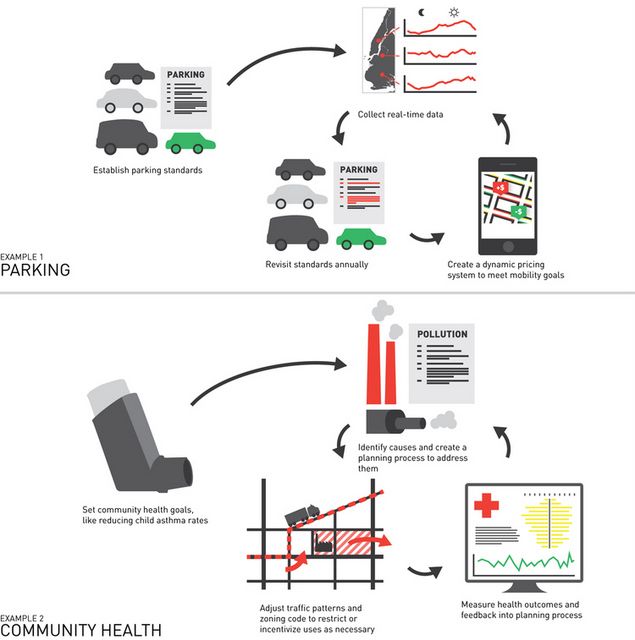
Mayor Bloomberg’s recent initiative adAPT NYC, to explore a new housing model for ‘small household population‘ has sparked interest in many architects and real-estate developers, eager to devise solutions. Bloomberg’s proposal suggests that the minimum standard 400 sq ft apartments be decreased to allow for a greater number of units per building. Robert C. Quinlan, Principal of Quinlan Development Group, transforms this idea into a proposal which takes the cultural and economic health of the City into account. Elaborating on Bloomberg’s plan, Quinlan suggests that the prices of these apartment should reflect the reality of lower-middle income artists and tech-savvy professionals.
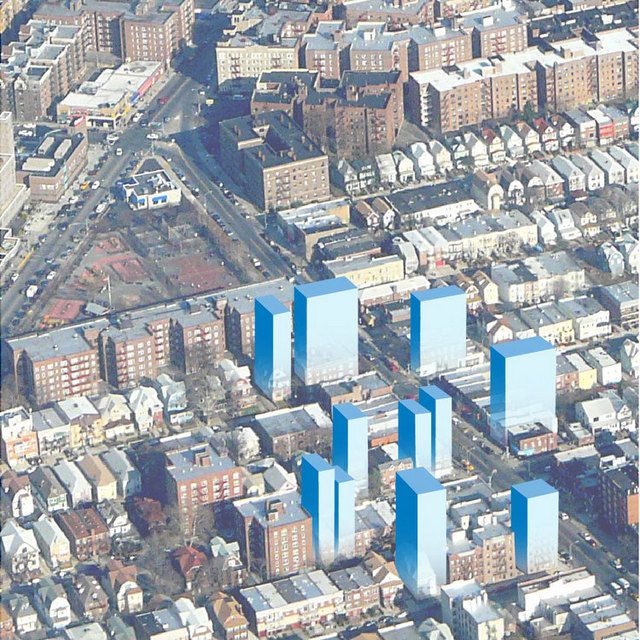
While the pilot micro apartments in Kipp’s Bay featured 250-300 sq ft apartments, they were grossly overpriced. With monthly rents maxing out at $1,200, Quinlan proposes rezoning industrial neighborhoods such as Bushwick, Gowanus, Red Hook, and Long Island City to feature these micro apartments on a larger scale. He explains that ” This rezoning should not mandate costly residential amenities like community rooms and in-house gyms. Younger residents of small living units will seek to spend more time outside, animating the surrounding streets with cafes, beer gardens, and delis.” Ultimately, addressing the expanding population of NYC while creating and maintaining affordable, livable housing is a endeavor requiring bold and creative solutions; and Quinlan’s dynamic plan is a great start.
Ronald Shiffman, a city planner, Professor and founder of the Pratt Center for Community Development, points at the income segregation citywide, resulting in a type of “sophisticated form of financial apartheid.” He paints a grim pictures for a dysfunctional and less healthy city if all hard-working city residents are not given a decent chance to thrive and succeed. The health of cities is at stake when there is a gross gap between rich and poor. By addressing the need for change in policies, Shiffman explains that support for residents and family’s of all income levels in addition to tax abatement for building owners and developers must be implemented by new policies that address their needs and presence in NYC.
Stay tuned for the next installment of Next New York. All images courtesy of the Forum for Urban Design.
Bhushan is an Architect and Urban Designer at Studio Daniel Libeskind. Get in touch with him @Bhushan_NYC
Subscribe to our newsletter